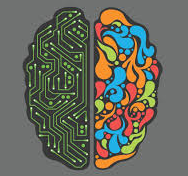1. Build a Platform for Medical Services
As the above picture, build a platform between users and related medical services. User usually starts to searching a medical services when there is a need. Different hospitals and clinics have different advantages and costs. Diagnosis & treatment are first things to deal with. It may take a few days. User may also need to change his/her nutrition, food, life style to keep healthy. These services need experts' suggestions to make decisions.
Because of serious information asymmetry, it usually take a lot time and money to get limited knowledge. People need a platform to have some balance to make better decisions.
Because of serious information asymmetry, it usually take a lot time and money to get limited knowledge. People need a platform to have some balance to make better decisions.
2 Data Structure
- 2.1 The App simulates a big hospital with all departments of medical treatments and it contains all kinds of illness description. User can tag the department and illness that he is interested.
- 2.2 Suggested treatments, clinics nearby and famous hospitals (locations)
- 2.3 User (or a patient) states: pre-hospital, in-hospital, post-hospital, life and exercise, food & nutrition...
- 2.4 Social: Bulletin Board System
3. AI role-playing
- 3.1 User (with Receiving character) vs. helper AI (with Exploiting character) or medical services
4. Organization Chart
- 4.1 Platform (APP) for M & M knowledge and possible treatments & improvements
- 4.2 APP for making a plan to achieve them (local or foreign trips, local or foreign foods & nutrition..)
- 4.3 Medical devices (ICT & AIoT) for monitoring customers
- 4.4 Adopt AI with Human Characters for other business or applications (complicated functions, learning, personal habits, marking...)
5. Related Industry Cluster
- 5.1 Test site from Taiwan: Taiwan has National Health Insurance for every people so it has 23-million people as a base of customers, higher cost-performance of medical & medicare services, most intelligent medical experts & school students, hardworking professional nurses than other countries. This platform has the potential to be developed into a competitive industry in Taiwan and attract other country's customers.
- 5.2 Other countries and cities for advanced medical services, e.g. US, Europe, Japan, Korea..
- 5.3 Local medical services: User may need local medical services for treatment and tracking.
6. Free & Charge
- 6.1 Free to attract more users in short time to become dominant (Platform Strategy): Basic APP functions, Helper AIs
- 6.2 Charge to get income: Treatment Planner (for Medical/Medicare, food/nutrition, travel planning..)







































